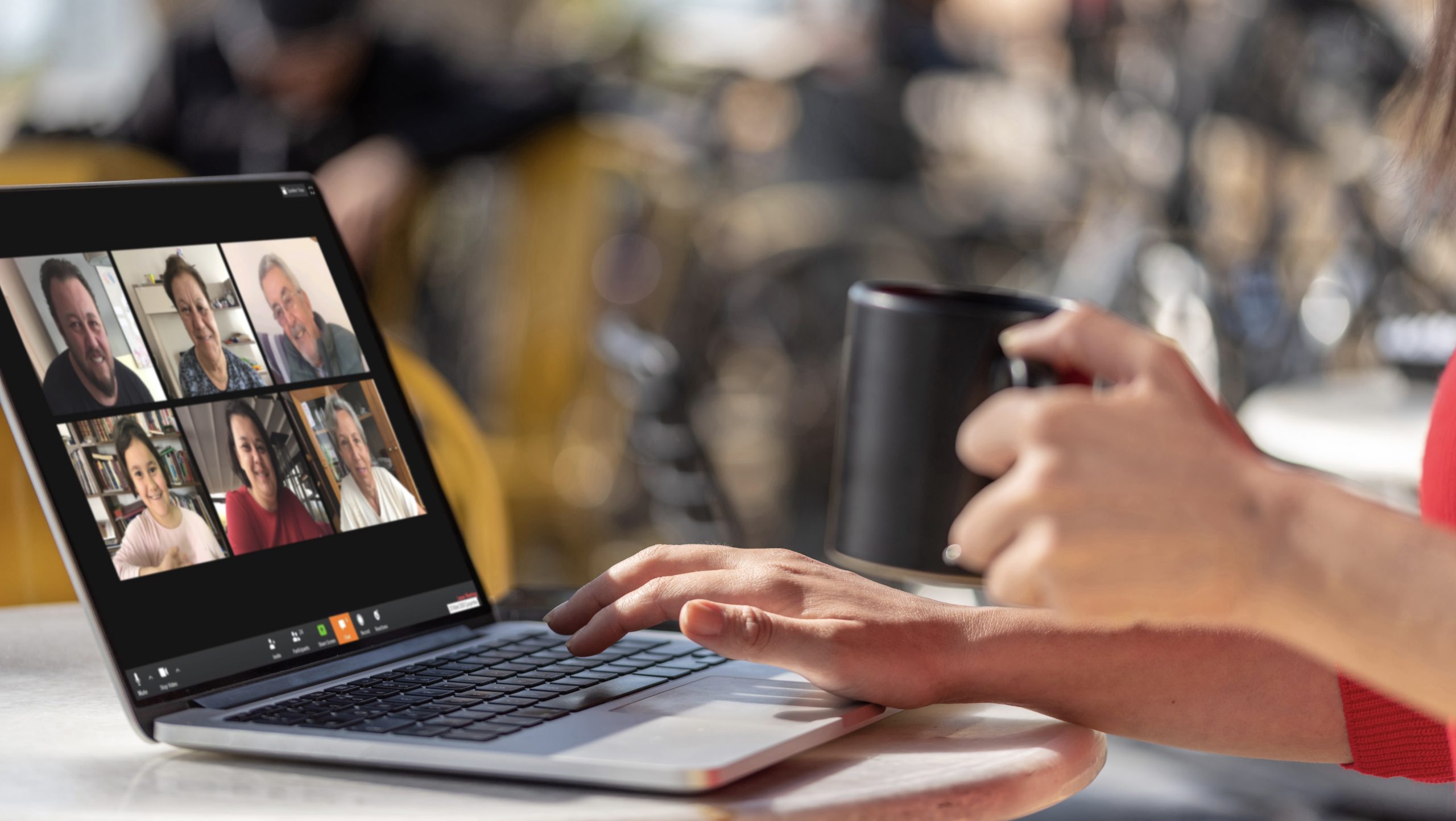
Cultural competence is a never-ending journey, especially for those interpreters who are learning about a new culture later in life. Marlene Elliott uses her own observations of call and response patterns to explore Deaf and hearing cultural norms regarding the phrase “I’m sorry.”
I’ve been interpreting professionally for 25 years. I like to think I’m reasonably good at what I do but from time to time something will dawn on me about ASL or Deaf culture that I’ve never known or realized before. How embarrassing! After all this time there are fundamental things I don’t know about the language I use and the culture I participate in. At the same time, how exciting! My learning is never done.
For me, I know my best teachers are the Deaf people who tolerate me so patiently, despite my many miscues. Not only have I made many mistakes, I’ve had to learn “how to learn” the Deaf way – by trusting my own eyes, really see what is in front of me and make sense of it. Then, because I’m hearing, I have to check it out with Deaf people.
Observation
This past year I realized something else about Deaf culture that I completely missed before and it really made me blush. I did what I usually do in these moments – I went to Deaf people I know and trust and ran my observation by them to see if I was noticing correctly. So far, everyone has affirmed this observation.
What I noticed is simply this:
ASL has expected patterns of exchange that I was never formally taught. One basic pattern, which is critically important to master, calls for signing SORRY at specific points in a conversation in order to affirm the relationship during a time of differences. After the SORRY the rest of the interaction can proceed; without it, the relationship feels awkward or can even be derailed completely. This SORRY in ASL has a different use and meaning than sorry in English.
Credibility
As I approached writing about my observation I looked in journals for articles about the role and function of apology in a variety of cultures and about call and response structures in dialogic languages. I found plenty of articles on both. I’m keenly aware that in the hearing world credibility comes from science, research, and academics so it was natural for me to go there – I’m hearing. But I also know that in the Deaf world credibility comes from Deaf people and from Deaf experience. There is no higher authority. If I am to write credibly about trusting my own eyes, examining what I see and consulting Deaf people, what does it mean if I then turn around and cite hearing experts on other cultures or languages? Isn’t it enough that Deaf people say so? In the end, I have to believe it is. Every culture defines its own source and structure for credibility. If I’m going to be in the Deaf culture, then surely I can practice this tenet when I’m writing about it.
What’s the Word For That?
In the hearing world we know what is real and not real by what has a label. If there isn’t a label for something, it usually isn’t legitimate. We love our labels! They explain so much. They give us a guide for how to think, feel, and act. It is part of our culture.
When I first began my interpreter training I was encouraged by my teachers to get involved with the Deaf World. They told me that “hanging out with Deaf people” was the best way to learn. They also admonished me to be careful because Deaf people had a way of expecting too much from others, of being dependent in an unhealthy way. “Be careful of your boundaries,” I was warned.
Around this time, researchers studying Deaf culture reported that RECIPROCITY was a primary feature of Deaf culture. Deaf people practicing RECIPROCITY support one another by contributing to the common good, not by only giving to those who have given to them or as a direct repayment to specific individuals. The same behaviors that I was warned to guard myself against were now explained and celebrated. Having a label allowed hearing people to re-frame them. Deaf people weren’t asking to be taken care of; they were inviting hearing people to participate in the common pool of mutual aid.
In my observations of difficult interactions between Deaf and hearing people I often see that when hearing people have a label for something, it is much easier to go along with what the Deaf people are doing. When we don’t have a label, we can have a tendency to stiffen up, to resist, and to end up in conflict.
I encourage all of us hearing people to recognize this tendency, know that it’s cultural, and realize that the Deaf World doesn’t feel the same need for labels to make their culture and their behavior legitimate so let’s take it easy on each other. Deaf people may not know what something is called but they sure know when it doesn’t feel right. We can trust them to guide us.
Culture Clash
Part One – be sure and take your turn!
We know that ASL is more interactive than English at most levels of register. This is well documented in linguistic research and confirmed by our own experience. The most formal ASL lecture will include interactive features that would be unthinkable in a formal English lecture. We also have plenty of proof that ASL is also more interactive in less formal settings. We know these required responses in casual conversation by their label – back channel feedback. If these features are absent in a conversation it is a noticeable absence, one that can have a serious meaning – refusing to engage, a certain kind of coldness or at best a show of cultural incompetence.
This need to engage in dialogue, this need to perform our part in any exchange is a hallmark of ASL. In dialogic languages the need for specific responses to specific kinds of stimulus is known as Call and Response. ASL, like any dialogic language, has standard Call and Response structures.
While these structures are relatively rare in American mainstream culture, a number of sub-cultures do have strong Call and Response patterns. Most people are familiar with at least a few. Black church has a strong Call and Response component where the responses come as individuals pepper the talk with affirmative encouragement. Catholic Mass has a highly scripted Call and Response component. 12-step meetings have short bursts of Call and Response exchanges during readings and introductions. Also, the military also has highly scripted Call and Response structures.
One thing we probably all know about Call and Response patterns is that we are keenly aware if there is a failure in the response. Anyone who has been to a workshop, meeting or seminar has had this experience. The person opening the session gives the call, “Good morning!” The required response from the participants is “good morning.” If the response is too weak, the call will be issued again with more emphasis. Normally more people will help with the second response, it meets expectations, and the event can begin. On the rare occasion that the second response is also too weak, instructions may follow and an emphatic call will be given for the third try. I have only rarely seen the third call fail because everyone is aware that the properly enthusiastic “good morning,” has to be delivered by the participants for the event to proceed. To refuse a third time would be more than awkward.
In spoken English I always know when I’m supposed to respond. I may not be able to explain why, but I recognize a call when I hear it. Having the label Call and Response has helped me also tune in to this aspect in ASL because I may not always recognize a call. At times when Deaf people repeat the same thing they’ve just said, but with more emphasis, I now ask myself, “is there something they’ve called for that I’ve failed to provide?”
Part Two – How sorry is SORRY?
Every culture has it’s own role and function for apologies. In mainstream America there are generally two uses for the phrase, “I’m sorry.” The most common is an admission of guilt. It is an expression of a personal failing and fault. It means I admit I did something wrong and I will personally take responsibility for it. The second is an expression of sympathy, usually reserved for a serious loss or trauma.
Of course, other cultures have very different meanings for the phrase “I’m sorry,” and different understandings of apology. In Great Britain, when one person bumps into another the person who is bumped says sorry. In Japan there are many uses for apology and Japanese people tend to apologize frequently as ways saving face and reinforcing social status or hierarchy.
So what does SORRY mean in ASL? My observation is that it affirms my relationship with you over whatever else is happening. It means that somehow we will solve this problem together. It does not mean I did something wrong, it just means I acknowledge that this doesn’t feel good and I will work it out with you.
When is an apology called for in the Deaf World? This part is tricky for me. I know it when I see it now but I’m not sure my description will satisfy anyone. Probably the best way to understand it is to use your own eyes, notice where it occurs and check it out with Deaf people. I know it is unscripted. As far as I can tell, it is based more on a feeling, a kind of discord, or a type of interaction, than on a specific set of words or signs. There is something between us that feels bad – a conflict, a misunderstanding, or a difference of perspective. It can even be as simple as disappointing someone, even though their expectations might not have been my responsibility.
What happens when SORRY isn’t delivered at the expected point in a Call and Response exchange in the Deaf World? As in any other culture, the call is offered again with greater emphasis. The story, or “complaint” is repeated with more emotion. And if the apology is still not delivered, then what? In this case an explanation of what is wrong here is usually amped up. The problem in the relationship is now stated explicitly, in detail, often slowly, and with emphasis. If the apology is still not delivered this is a worst-case scenario. As a final attempt to save the relationship someone will probably be instructed to apologize. If the apology still isn’t delivered the relationship may be beyond repair. The connection would then be broken in a fundamental way.
Now What?
I can use this observation to continue my noticing and checking with Deaf people.
I’m may overuse my SORRY, like a child discovering a new word, until I know exactly where it fits. This is a natural part of incorporating a new skill. It’s ok.
I can continue to ask questions. I can look at where we, the sign language interpreting profession, have a need to use our SORRY in our collaborating with Deaf people. Have there been times when we have not said SORRY when we needed to? How has it affected our relationships?
Of course, my big question is what else don’t I know? What other mistakes have I been making without ever realizing it? Are there ways for me to improve my noticing, or inviting Deaf friends to tell me when I’m off? Can I be humble and know that corrections are an act of friendship and love, not a criticism of who I am? Can I be thankful that there is always more to learn even when I’m really embarrassed?



